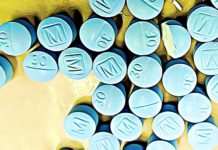risk to develop problematic behavioral and/or likelihood of drug use within 18 months. At the first six-month follow-up, 2,696 students that participated in the initial survey, 423 students were identified as high risk.
The follow-ups were conducted three more times for a total of two years.
Testing can potentially reveal up to 90 percent of the most at-risk teens before they develop substance abuse disorders or behavioral problems, Conrod said.
The program itself provides training for teachers on therapy techniques. PreVenture students participate in a personality test, and those who are identified as an elevated risk for alcohol and drugs misuse participate in two workshops on how they can control key behavioral patterns associated with addiction vulnerabilities. These workshops touch on cognitive behavioral tools and behavior problems
PreVenture programs are currently being implemented globally and tested in countries such as Australia, the Netherlands, the Czech Republic, and Canada, she added. “The studies that we did each revolved around 20 to 30 schools, but we also train different health authorities in school districts who are using the program as well.”
PreVenture results showed reduced use of cannabis, cocaine, alcohol and other drugs, Conrod said.
“The difficulty now is finding an implementation model and also putting pressure on government to develop and invest seriously in systems that are going to support prevention. I think that’s the next step in this area in terms of addiction.”
















